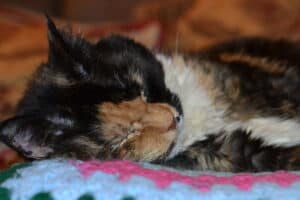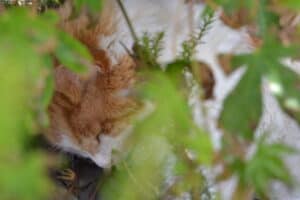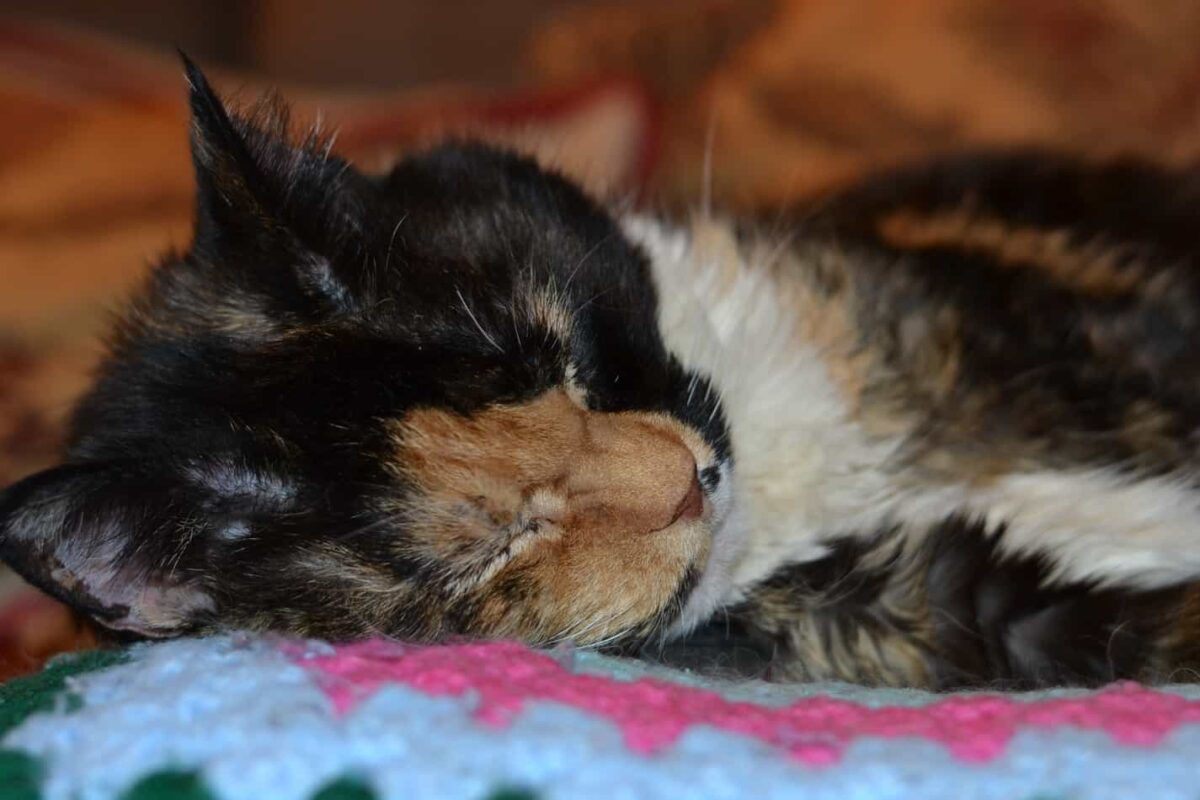About 20 years ago, I saw this old cat, skinny, coat unkempt and what flashed through my mind was: Neglect. Today I know several reasons that can cause a cat to appear unhealthy because I look after sick cats. But, at the time, I did not know.
Molly was 15 when I adopted her, and Albert was 16 when I fostered him. Both arrived at the RSPCA, weighing 2kg from living as strays. The rescue’s vet flagged them both as having hyperthyroidism. The disease is caused when the thyroid glands in the neck become enlarged and overactive. The disease causes high metabolism, which accelerates weight loss, leading to high blood pressure and an increased heart rate. It affects cats aged 7+, but I remember a vet telling me his 3 years old Siamese cat had thyroid disease, so be watchful of your feline. If hyperthyroid is untreated, your cat can become extremely ill. Two signs of hyperthyroid problems is an unkempt coat and weight loss.
The signs for hyperthyroid can appear slowly. But if left untreated, the illness will lead to death, so you must take your cat to see a vet for tests. Molly and Albert had annual blood tests to determine how high their thyroid levels were. There are symptoms associated with the disease, and normally urine tests are taken to determine how the kidneys are functioning alongside blood tests for the thyroid. The results decide if your cat has hyperthyroidism, and your vet will decide a dosage suitable for your cat.
Molly started on 10mg Vidalta but continued being sick, so her vet increased the dosage to 15mg tablets. The vomiting stopped, and Molly gained weight and tipped nearly 5kg. Albert was prescribed a 15mg tablet, but he developed kidney disease, so his vet decided not to increase the dosage to 25mg. As a result, he weighed between 2.43kg to 3kg. So you see, it is vital to allow your vet to perform necessary tests to determine the cause of illness and the correct medication and dosage to administer.
Signs of hyperthyroidism

These signs could relate to anything. Unless you take your cat to a qualified veterinary surgeon who can use their expertise to identify a possible cause and test to diagnose, please do not guess the illness. Your cat may need treatment to manage the disease. These are the symptoms of hyperthyroidism.
| Tiredness | Gaining or losing weight |
| Diarrhoea | Eating more |
| Vomiting | Drinking and/or urinating more |
| Unkempt coat | Hyperactivity |
Molly’s symptoms: vomiting until on the correct dosage. Eating more. Weight gain. Urinating more.
Albert’s symptoms: Unkempt coat. Tiredness. Losing weight.
Untreated cats
Basically, your cat will die if hyperthyroidism is left untreated. Untreated, it can lead to loss of appetite, heart failure, blindness and blood in the stools.
Medically treated cats

It is important your cat has been prescribed the correct dosage, and you can rely on your veterinary surgeon for that. As mentioned, Molly continued being sick on 10mg of Vidalta, but this stopped when the dose was increased to 15mg.
Your cat will be on medication for the rest of its life. If medication is stopped, the symptoms will return, so only management with an anti-thyroid drug can give your cat a longer life. Molly and Albert took their tablet daily. Administering medication must be at the same time each day to ensure evenly spaced. Read the medication instructions – Vidalta must not be crushed and be given to your cat whole. The anti-thyroid drug will stop the over-production of the thyroid.
Anti-thyroid drug
Your veterinary surgeon will decide which brand is suitable for your cat. He will ascertain whether appropriate depending on your cat’s health and alongside any other medication prescribed. For example, Molly was on anti-inflammatory drugs: Loxicom, then Onisor for arthritis.
Both were prescribed a tablet called Vidalta, which contains an active ingredient. It is available in 10mg and 15mg.
Vidalta tablets are designed to reduce the excess production of thyroid hormone from the thyroid glands. Vidalta are classed as a sustained release type of tablet. This helps to maintain their effectiveness over the whole day.
Viovet website
Of course, like all medication, there can be side effects, so be aware, so you can continue to monitor your cat’s wellbeing.
Vidalta tablets can show side effects sometimes, such as vomiting or diarrhoea. Occasionally they cause dermatitis of the face and neck, resulting in small, itchy, sore patches. It might be necessary to reduce the dose or stop treatment if side effects are seen, so veterinary advice needs to be taken.
Viovet website
Vidalta is a prescription medication. You will not find it on a pet shop shelf. You can purchase directly from your vet. Or, as I did, buy a veterinary prescription and order from an online pet retailer authorised to sell veterinary medication. Please read my article about pet medication prescriptions.
Helpful information
How long does a cat live with hyperthyroidism?
Normally 3 to 5 years, I think giving them life for that extra time is worth every moment. However, other complications can arise and cause death. For example, 19 months after fostering Albert, he had a blood clot in his leg and could not be operated on as he weighed 2.43kg. The year before Molly died, her thyroid levels were all over the place, and she had several blood tests in a short space of time. She was given 10mg then a 15mg dose of Vidalta. Then suddenly, everything levelled off. But the following year, she stopped eating wet food. Three weeks later, she started vomiting, would not eat even dry biscuits, became obsessed with water, and frantically wanted to be outside (she loved being indoors). I took her to the vets; her gums were pale – a sign of lack of oxygen. Her veterinary morally told me it was ‘time’ but offered blood tests. Always be keeping a watchful eye on your cat.
How do you give a cat a tablet?
EasyPill is a great invention. It is a flavour putty, and you can push the tablet inside and give it as a treat. Sometimes cats become bored of the same food treat, so that I would do the same with meat or dip in Weebox Lic-e-Lix sauce. (remember, do not crush the tablet)
Poppys Pets is a participant in Awin and Amazon Associate affiliate programs which compensates me for referring traffic. It is of no extra cost to you and if thinking of buying a product, please consider using my link. It\'ll earn Poppy\'s Pets a few pennies to continue to this website. Only a selection of articles and videos on this website and YouTube channel contains affiliate links. Further information: Disclaimer and Privacy Policy


